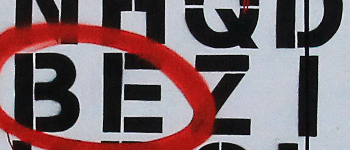The Times Literary Supplement reviewed three books of particular relevance to this blog last week.
The Edge of the Precipice, edited by Paul Socken, is collection of essays, and an elegy to what one contributor...
...Drew Nelles, calls “the perfect aloneness you feel” when buried in a book. Books offer respite and escape; they are getaways for the mind. Nelles, the editor of Maisonneuve magazine, deplores how so-called social reading and content sites’ auto-sharing – see what your friends are reading right now! – have “removed the last bit of resistance against the onslaught of constant dissemination” made possible by the internet.
This is very much the tone, also, of This is Not the End of the Book, by Eco and Carriere (not featured in the review)-- here is Eco at his most assertive:
...there are technical innovations that do not change, such as the book. We could add the bicycle, and even spectacles. Not to mention the alphabet. Once perfection has been achieved it cannot be improved.
Second up was Geek Sublime: Writing Fiction, Coding Software by Vikram Chandra. This interested me, as a software developer who also writes and studies fiction.
Part memoir, part literary-historical criticism, part technical analysis, it is a lovely, surprising, sometimes arcane project that speaks both to the computer crowd and the literary one – and makes the point that they don’t have to be separate camps, just as the print/digital divide has begun to blur. Computers and digital texts have material presences, too; literary works operate by structural and grammatical rules that find counterparts in programming languages.
And it's true. Code aspires to elegance. It wants to be made beautiful. Like a well-planned novel, It is spacial.
The novel is spacial because it describes a world of space, but it is also spacial in the shapes it weaves. Foreshadowings and reintegrations, recurring symbols, themes, rhythms and repetitions all reach across the linear left to right and top to bottom to form a sculptural whole.
Something similar happens when you negotiate elegant source code. This is a machine whose operations you only really see in your mind. Components are crafted to snap together and to negotiate inputs and outputs. You run a section of code, and you imagine these formless things in action, these boxes and pipes moving information around in a frictionless kind of dance.
In a cruder way than literature, but also in a satisfyingly kinetic fashion. Code wants to model the world and be purer than it at the same time. It wants to simplify complexity, and still rise to it. It wants to hide its compromises, its piping and its short cuts, behind clean façades.
But the elegance of a computer program is almost always hidden beneath the user interface -- the web page, the smart phone app screen. Even other programmers often only see an API -- a set of convenient callable routines that simplify the system's inner workings. A beautiful program may have a clunky user interface, or vice versa, making beautiful code a largely hidden aesthetic. Code...
...serves as “a mediating dialect between human and machine”; lays out basic principles of computing such as logic gates and Boolean algebra; and describes what makes code aesthetically pleasing and why so much ugly code runs the world, including the computers of the Pentagon. “Beautiful code is lucid, it is easy to read and understand”, he writes. “Each small part is coherent, singular in its purpose, and although all these small sections fit together like the pieces of a complex mosaic, they come apart easily when one element needs to be changed or replaced.” Over time, as software programs grow bigger and are tinkered with, lucidity gives way to murky workarounds. “If you’ve ever written code, the fact that so much software works so much of the time can seem profoundly miraculous”, Chandra says. “Software is complicated because it tries to model the irreducible complexity of the world.” One could say the same of literary fiction.
Finally: From Literature to Biterature by Peter Swirski. And the reader's first job is presumably to forgive the author for such a clumsily ugly title. Not to mention the awful neologism in the following passage.
Inspired in part by the work of Stanisław Lem, Swirski analyses the prospects for “computhors” as he calls these imagined but (he believes) soon-to-be-real machine entities. His focus zigzags across the fields of artificial intelligence, computing history, cognitive science, narrative theory, the evolution of men and machines, and post-Turing attempts to figure out how to identify computer intelligence if (Swirski would say when) it arises. “Underlying my explorations is the premise that, at a certain point in the already foreseeable future, computers will be able to create works of literature in and of themselves”, he writes.
That's right. Computhor. Let's give that a beat.
OK. But it is a fascinating area. Not least because we explain ourselves to ourselves through story. So perhaps story is a useful way in to artificial intelligence.
And when the singularity finally occurs, maybe the next generation of machine-beings will be kinder to us thanks to an empathy for our fictions. Or perhaps this understanding will merely aid them in enslaving us.




